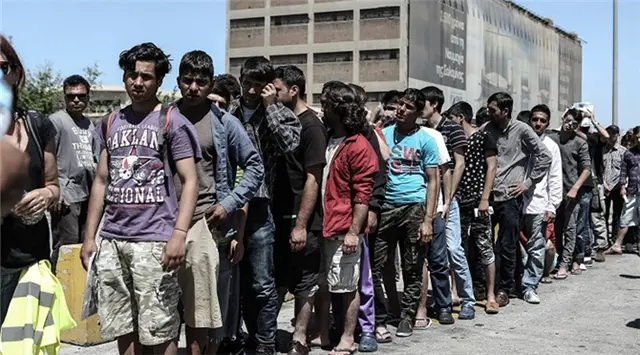The Finnish authorities are trying to verify the security risks caused by the disappearance of some 2, 500 asylum seekers.
The figure was released over the weekend by Sanna Palo, head of the intelligence unit of the Finnish National Bureau of Investigation.
In an interview with the Commercial TV News on Saturday, Palo said the disappearance was a "major risk" for the society. She said the lost asylum seekers were susceptible to utilization and could become victims as well.
Lost asylum seekers refer to people who have left the refugee reception centres where they are registered and have had no contact with the Finnish authorities for at least two months.
Esko Repo, head of the asylum unit of the Immigration Authority, told newspaper Helsingin Sanomat that the number of lost people was higher than earlier. He said the number was "substantial".
Assuring the public, Finnish Security Police SUPO told Helsingin Sanomat on Monday that the disappearance of asylum seekers did not lead to security risks "automatically".
Senior Inspector Tuomas Portaankorva of the Security Police stressed on Monday that people with links to "violent groups" were not necessarily those who had contacts with "terrorism".
"The matter is being looked into for the time being", he said. "There are people in Finland with contacts to violent groups, but it is a different matter whether they have contacts with terrorism, " Portaankorva said.
The Immigration Authority believes that many of the lost people have left Finland. They may have returned to their country of origin or they may have gone elsewhere in the Schengen area.
"Asylum seekers from Iraq have been particularly keen on returning back home, once they have established that the picture painted by travel organizers about Finland has not been true," a spokesman for the the Immigration Authority said.
Finnish reception centres are not closed institutions. The inhabitants can come and go almost as they like during the day time hours.
Asylum seekers also get some "per diem" money that they can use for purchase of necessities and travel. Many centres are located within cities or suburban areas where public transit can be used by asylum seekers to travel freely.
There is no consistent control of people who would like to leave Finland and head for other places in the Schengen area either.
Earlier this year, Europol estimated that some 10,000 asylum seekers were missing. Europol concluded that many of them might have ended up being used by organized crime.
European media has given much higher numbers. In Germany, for example, local media said that 130,000 asylum seekers got lost in Germany alone.
(APD)
 简体中文
简体中文

